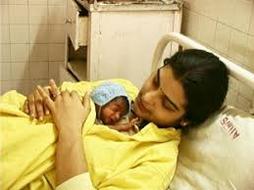How important is Skin to Skin? How does it benefit me and my child(ren)?
Frequent and/or prolonged skin to skin contact between an infant and caregiver (mostly mother, and even father) is a very effective technique to
- Facilitate bonding
- Improving milk supply
- Getting baby back to breast
- Soothe an inconsolable baby
- Maintain baby’s temperature, blood pressure, blood sugar level, oxygen level, breathing and heart rate
- Reduce maternal stress and PPD occurring due to separation
- Help boost the baby’s immune system
This is also called Kangaroo Care or Kangaroo Mother Care (KMC). This originated in developing countries where incubators and other technology were short in supply. In fact, in many tribal communities across the world, it’s a regular practice to keep the baby wrapped by a cloth onto the mother’s body. Skin to skin care (SSC) is a norm in many communities. It works wonders for not just preterm, or NICU or low birth weight babies, but also for full-term, healthy babies.
The Skin to Skin Care (SSC) or Kangaroo Mother Care (KMC) method:
During SSC or KMC, the infant, clad only in a diaper and cap, is held in an upright prone position against the bare chest of the parent (most often the mother) and covered with clothing and/or a blanket. The duration of skin-to-skin contact is ideally maintained more or less 24/7, day in and day out. But it’s not always possible. Thus, SSC sessions are usually kept for at least 1 to 3 hours.
Steps to practice SSC/KMC:
- Keep the baby in only a diaper.
- Wear a shirt or any clothing that can open fully from the front.
- Mothers need to avoid wearing a bra.
- Avoid wearing any perfume or body spray.
- Wash hands before picking the baby up.
- Sit in a reclining (around 30 to 40 degrees) position comfortably.
- Keep pillows around to support your arms, if needed.
- Open the clothing completely from the chest.
- Place the baby on your bare chest facing you.
- Baby’s head should be turned to the side with the head tilted slightly up.
- Baby’s legs can be curled up comfortably in the foetal position.
- Baby’s hands can lie next to her face.
- You can hold and support the baby from underneath her (near buttocks) and behind (back).
- If it is cold, put a cap on the baby’s head.
- Cover the baby with a soft quilt or blanket around her (not covering her face), if required.
- It is important for the baby to go through a full sleep-wake cycle to (60 minutes) as a minimum to get full benefits of SSC/KMC. So, stay in this position for at least an hour or more.
For full-term, healthy babies and for low birth weight or preterm babies after once they are stable, SSC/KMC can also be practised while walking.
References:
http://kangaroomothercare.com/
https://www.llli.org/breastfeeding-info/premies-kangaroo-care-skin-skin-contact/
https://www.ncbi.nlm.nih.gov/pmc/articles/PMC3287094/

Wish to speak with a member of our team who is a certified lactation professional and also an experienced breastfeeding mother, click on this link.
Medical Advice Disclaimer
THIS WEBSITE DOES NOT PROVIDE MEDICAL ADVICE.
The information, including but not limited to, text, graphics, images and other material contained on this website are for informational purposes only. No material on this site is intended to be a substitute for professional medical advice, diagnosis or treatment. Always seek the advice of your physician or other qualified health care provider with any questions you may have regarding a medical condition or treatment before undertaking a new health care regimen, and never disregard professional medical advice or delay in seeking it because of something you have read on this website.
Disclaimer
We understand and acknowledge that parents and babies can be of various genders on a spectrum of LGBTQI+. Families come in diverse flavours. However, in our articles, for the sake of simplicity and convenience, we will be referring to the breastfeeding parent as the mother and using the female pronouns- ‘she’ and ‘her’ for babies. Babies can be nourished and nurtured in different ways and while we have used the terms breastfeeding and nursing, we recognize that parents can opt to chest feed or finger feed.
We don’t have conflicts of interest and declare, and we are compliant with the WHO code of marketing of breastmilk substitutes and the IMS act.
In case you find any information on this website that needs to be updated, please write to us at info@bsim.org.in






